Introduction
Ready to take your Salesforce Developer skills to the next level?
Land your dream job with confidence by mastering the most frequently asked salesforce developer interview questions. This curated list specifically targets freshers and developers with 3+ years of experience, ensuring you're prepared for advanced Salesforce and Apex scenarios.
What's Included:
- Real-world interview questions to test your in-depth Salesforce knowledge
- Focus on key areas for experienced Salesforce Developers
- Preparation for the challenges and opportunities you'll face on the job
Don't settle for average. Impress your interviewers and unlock your full potential in the high-demand Salesforce developer field.
Get Started Now!
Salesforce Developer Interview Questions for Freshers
Q1). What are the types of Salesforce licenses available? What are their limits?

A). Salesforce: Designed for clients who require full access to standard CRM and Force.com AppExchange applications. Clients with this client permit are qualified to get to any standard or custom application. Each permit gives extra stockpiling to Enterprise and Unlimited Edition clients.
B). Salesforce Platform: Designed for clients who need access to custom applications but not to standard CRM usefulness. Clients with this client permit are qualified to utilize custom applications created in your association or introduced by Force.com AppExchange. What's more, they are qualified for use center stage usefulness, for example, accounts, contacts, reports, dashboards, records, and custom tabs. These clients are not qualified for some client consents and standard applications, including standard tabs and articles, for example, conjectures and openings. Clients with this permit can likewise utilize Connect Offline. Clients with a Salesforce Platform client permit can access all your association's custom applications. Each permit gives extra stockpiling to Enterprise and Unlimited Edition clients.
C). Force.com: One App – Designed for clients who need access to one custom application but not to standard CRM usefulness. Force.com – One App clients are qualified for indistinguishable rights from Salesforce Platform clients, besides approaching a boundless number of custom tabs. Bhat as it may, they are restricted to the utilization of one custom application, which is characterized as up to 10 custom items, and they are constrained to pursue just access to the Accounts and Contacts objects.
D). Force.com App Subscription: Permits clients’ access to a Force.com Light App or Force.com Enterprise App, neither of which incorporates CRM usefulness.
A Force.com Light App has up to 10 custom articles and 10 custom tabs, has perused just access to (salesforce CRM preparing) records and contacts, and supports object-level and field-level security. A Force.com Light App can't utilize the Bulk API or Streaming API.
A Force.com Enterprise App has up to 10 custom items and 10 custom tabs. Notwithstanding the consent of a Force.com Light App, a Force.com Enterprise App bolsters record-level sharing, can utilize the Bulk API and Streaming API, and has perused/composed access to records and contacts.
E). Knowledge Only User: Designed for clients who just need access to the Salesforce Knowledge application. This permit gives access to the accompanying tabs: Articles, Article Management, Chatter, Chatter Files, Home, Profiles, Reports, custom items, and custom tabs. The (sap preparing) Knowledge Only User permit incorporates a Knowledge Only profile that awards access to the Articles tab. A client must have the "Oversee Articles" consent to view and utilize the Article Management tab.
F). Chatter Free: Designed for Unlimited, Enterprise, and Professional Edition clients that don't have Salesforce licenses, however, need access to Chatter. These clients can access standard Chatter individuals, profiles, gatherings, and documents. They can't get to any Salesforce articles or information.
G). Chatter Only: Also known as Chatter Plus. Intended for Unlimited, Enterprise, and Professional Edition clients that don't have Salesforce licenses, however, need access to some Salesforce questions notwithstanding Chatter.
Q2). What is the junction object in Salesforce Triggers, and what is its purpose?
Junction objects in salesforce are utilized to fabricate many-to-numerous connections between objects. For instance, the client can take an enlisting application where a situation for an occupation can be connected to numerous applicants or can interface a contender to numerous different employments. To associate the information model, an outsider item is alluded to as an intersection object. In the given model, the intersection object is a "request for employment."
Q3). What is an Audit Trail?
The Audit Trail work in Salesforce is valuable for picking up data or for following all the ongoing arrangement changes that the organization has done in the association. The review trail can safeguard information for as long as a half year. The Setup Audit Trail attribute available in Salesforce allows us to record alterations done to the company minutely. It tracks each change regarding the administration, personalization, security, and others of the Salesforce org.
Q4). What is the difference between SOQL and SOSL?
SOQL is Salesforce Object Query Language, and SOSL is Salesforce Object Search Language. If you are detecting that Salesforce is a culture unto itself, you are right! SOQL extracts the track records from the database through the utilization of the SELECT keyword. SOSL extracts the track records from the database utilizing the FIND keyword. The following table will help you understand the differences better.
|
SOQL (Salesforce Object Query Language)
|
SOSL (Salesforce Object Search Language)
|
|
A single object can be searched at a certain time.
|
Multiple objects can be searched at a certain time.
|
|
It queries each type of field.
|
It queries email and text.
|
|
It is utilized in classes and triggers
|
It is utilized in classes but not used in triggers.
|
|
DML tasks can be executed on query outcomes.
|
DML operation can’t be executed on search results.
|
|
It returns back the records.
|
It returns back the fields.
|
Q5). What is a Wrapper Class?
A Salesforce Wrapper Class is a class whose occasions are an assortment of different items and is utilized to show various articles on a Visualforce page in a similar table. A wrapper class in Salesforce is utilized primarily to wrap information gathered from the available objects to a fresh and new object. A subject is stated as a unique kind that excludes a database or any related field. It does not comprise any API page. However, it is totally a valid object.
Q6). What is Sandbox? What are the different types of Sandbox?
With regards to advancement, a Salesforce Sandbox is a proving ground for code before it is executed into generation. There are a few unique kinds of Sandbox, with the differentiation being how a lot of information the Sandbox can store and the sort of information it can duplicate from creation. It is the replica of the company in a different surrounding that can be used for different purposes like testing and training. Sandboxes are totally segregated from the Salesforce production team. The tasks done in the sandboxes do not hamper the production in the Salesforce org.
Q7). What is the workflow?
A workflow robotizes the accompanying activities: make another undertaking, send an outbound message, send an email alarm, or update a field. It is actually a vessel or business logic machine that automates a few activities depending on a certain situation. When those situations are fulfilled, the action gets performed, and the records will be saved when they are not satisfied. However, any action will not be performed. The four kinds of workflow actions include Email Alerts, Filed Update, Tasks, and Outbound Messages.
Q8). What is Apex test coverage? What’s the minimum test coverage required to deploy?
To ensure that your code satisfies certain rules, Apex Code incorporation gives you what number of executable lines of code in your classes and triggers that have been drilled by test procedures. The code consideration rate is an estimation of the number of verified lines isolated by the whole number of verified lines and uncovered lines. The base test incorporation required to pass on to creation is 75%
Q9). What is the distinction between Trigger and Process Builder?
The trigger is a code-based assessment of criteria in Apex, used to set a chain of occasions. Procedure Builder assesses criteria and performs activities when criteria have been met.
Process Builder can execute only a few actions. However, when we want to execute any special action, then a trigger comes into play. It is possible to personalize anything in Salesforce through a trigger. This is not allowed in the case of process builders. Removal of a record is impossible through salesforce process builder and workflow. However, a trigger in Salesforce allows us to erase a track record.
Q10). What are the two options for when Apex Triggers can run?
Apex triggers in Salesforce allow you to execute personal actions prior to or post events to track records in Salesforce, including insertions, upgrades, or deletions. Database systems assist salesforce triggers, and Apex offers trigger support to control records. Apex Triggers in salesforce can either run before a record has been spared or after. A preceding activity is normally used to confirm data that will be embedded and after the trigger is utilized to get to the information that a client or framework has recently entered.
Salesforce Developer Interview Questions for Experienced
Q11). What is Field Bucket used for?
Field Bucket can be utilized to order records without including any additional information. The Bucket Field in Salesforce is a vital attribute that lets us classify the values for a field in a report very fast without the need to make a personalized formula field at the object level. Bucketing is useful to categorize, group, filter, or organize report data.

Q12). What is the difference between S-Controls and Visualforce?
S-Controls are gadgets inside the Salesforce stage. This is currently supplanted by Visualforce, which is the new markup language for Salesforce. An S-control refers to the element that is meant to personalize the personal Salesforce interface to cater to the extra requirements. This involves the moment we must include extra custom data forms in the interface.
VIsualforce refers to the structure that lets the salesforce developers create systematic, custom user interfaces that can be hosted on the Salesforce Lightning Platform natively.
Q13). Why do we need to write test classes? How to identify if a class is a test class?
Since salesforce test classes and test strategies check whether a specific bit of code is working appropriately or not. On the off chance that that bit of code comes up short, at that point, engineers/analyzers can precisely find the test class having the broken bug.
Test classes can be resolved effectively because each test class will be commented on with the @isTest catchphrase. Indeed, on the off chance that we don't comment on a test class with @isTest, at that point, it can't be characterized as a test class. Essentially, any strategy inside a class with the watchword test method is a test technique.
Q14). What is WSDL?
WSDL (Web Services Description Language) is an XML record portraying web administration. WSDL is obtained from Microsoft's Simple Object Access Protocol (SOAP) and IBM's Network Accessible Service Specification Language (NASSL). WSDL replaces both NASSL and SOAP as methods for communicating business benefits in the UDDI vault. It is utilized in a blend with SOAP and XML Schema to give web benefits over the Internet. A customer program associated with a web administration can peruse the WSDL to figure out what capacities are accessible on the server. Any extraordinary datatypes utilized are installed in the WSDL record as XML Schema. The customer would then be able to utilize SOAP to call one of the capacities recorded in the WSDL. There are two sorts of WSDL in Salesforce:

Q15). What is an external ID in Salesforce? Which field data types can be used as external IDs?
An outside ID is a custom field that can be utilized as a one-of-a-kind identifier in a record. Outside IDs are, for the most part, utilized while bringing in records/information. When bringing in records, one among the numerous fields in those records should be set apart as an outside ID (extraordinary identifier). A significant point to note is that solitary custom fields can be utilized as External IDs. The fields that can be set apart as outside IDs may be Text, Number, E-Mail, and Auto-Number. The External ID refers to any personalized field that contains the External ID feature checked, implying that it has a distinct record identifier from a system external to that of the Salesforce.
Q16). Where did you first learn to become a Salesforce Developer?
Numerous Salesforce Developers have considerable experience with software engineering or programming. However, others have discovered the innovation and gone gaga for it, learning the nuts and bolts before turning into a Developer in the long run.
With this inquiry, the questioner is attempting to discover what was explicit that attracted you to your present place of employment job. Is it safe to say that you are a designer on the most fundamental level? Do you exceed expectations at critical thinking works out? Do you invest wholeheartedly in creating answers for private ventures? Consider your key encounters and how they characterized you as an expert.
Q17). Are you Salesforce certified?
If you are Salesforce ensured, this will be a significant direct answer at that point. You can tell the questioner when you got confirmed, how you found the accreditation procedure, and how confirmation has helped you as a designer.
If you aren't Salesforce guaranteed, it might assist you with learning somewhat about Salesforce Developer Certification and how the procedure functions. There are three sorts of confirmation for designers — Commerce Cloud Digital Developer, Platform Developer I, and Platform Developer II — and regardless of whether you haven't moved in the direction of any of them, exhibiting that you recognize what they are and how to achieve them shows your comprehension of the Salesforce condition and demonstrates that you have aspirations to turn into a specialist in your field.
Q18). Have you ever had to deal with data loss? What are some of the causes and workarounds?
As a business with an organizational framework, for example, CRM or ERP programming, perhaps the greatest concern is the loss of information and the effect that it can have on the association. As a designer, you will be relied upon to execute shields against loss of information or to take protection measures to guarantee the loss of information never happens.
With this inquiry, the questioner is searching for understanding and models, as they need to know whether you will have an emergency course of action in the direct outcome imaginable. There's nothing despicable about conceding botches in the past concerning loss of information as long as you have gained from them and distinguished why information misfortune happened. Showing this in the meeting and presenting down-to-earth arrangements will work in support of you.
Q19). Can you have a roll-up summary field in the case of the Master-Detail relationship?
Truly. You can have a move-up outline if there should be an occurrence of an ace detail relationship. In any case, not if there should be an occurrence of a query relationship.
A move up the rundown field is utilized to show an incentive in an ace record dependent on the estimations of many fields in a detailed record. The ace must identify the detail record through an ace detail relationship.
There are 4 estimations that you can do utilizing the move-up synopsis field. You can tally the number of detail records identified with an ace record. Or on the other hand, you can ascertain the aggregate, least worth, or greatest estimation of a field in the detailed records.
Q20). Explain the term “Data Skew” in Salesforce.
"Information slant" is a condition you will experience when working for a major customer with over 10,000 records. At the point when one single client possesses numerous records, we call that condition a 'proprietorship information slant'. At the point when such clients perform refreshes, execution issues will be experienced on account of an "information slant". This happens when solitary clients/individuals from a solitary job possess a greater part of the records for a specific article.

Q21). What do you understand by governor limits? Suggest some examples.
Salesforce Governor limits refer to the resource usage boundaries imposed on Apex by Salesforce to avoid runaway methods from monopolizing resources. This is important because Salesforce constitutes a multi-tenanted surrounding; hence run resources are distributed. Various examples of governor limits include SOQL queries, DML commands, and the number of HTTP callout requests embedded in the transaction process.

Q22). Mention the programming languages that can be utilized to personalize a Salesforce instance.
The server-side programming language that is utilized to personalize Salesforce is known as Apex, which comprises a syntax identical to Java. Various technologies are available on the front end, among which the prime one is the Lightning Web Components. Then comes the earlier and now more niche Aura Elements and Visualforce. All of these utilize HTML, CSS, and JavaScript in unity with Apex. We can simultaneously utilize Flow, which refers to a low programming language to personalize the front and back end.
Q23). What are the declarative tools that are utilized to personalize a Salesforce instance?
The fundamental declarative tool refers to the custom fields and custom objects that can be stated declaratively, and it lets us personalize the database schema of an instance. We can also personalize objects by utilizing page layouts and Lightning app pages to declaratively personalize the appearance and feel of the record’s webpage. If we want to make declarative automation, we must use Flow. Process Builder and Workflow Rules are there, but they are deplored by Salesforce, and hence declarative automation must be generated through Flow.

Q24). When do we opt for programmatic development rather than declarative development?
- Declarative tools are useful in case of rapid development, owing to their nature, since they facilitate fast iteration and generally have lesser build times. When the business logic needed is direct with lesser “gotchas”, it is usual to take the benefit of declarative tools with rapid builder time, which can convert to an inexpensive build.
- Programmatic developments are chosen when the demands get more intricate, in very unique business processes that don’t allow themselves to flow. A benefit of running a programmed solution is that performance will outdo the declarative solution owing to the power to utilize more unique logic and eradicate overheads.
Q25). Explain what you mean by the Salesforce release model.
Salesforce acknowledges important updates and modifications thrice yearly, seasonally, in Summer, Spring, and Winter. The particular dates for the update differ. However, sandbox instances are upgraded to facilitate for testing of any personalizations in an organization, prior to 4 to 6 weeks before the release. The Salesforce platform is regularly getting modified, with daily releases thrice a year , that involve many features. Having a release strategy can support you to enjoy the full benefit of modern functionality.
Q26). Elaborate on the three kinds of object relationships.
The three kinds of object relationships are as follows:
- Lookup Relationship: Here, two records are linked to one another through the child object and have a lookup field that is indicating to the other one, which is the parent object.
- Master-detail: Here, the child record is taken as the detail, and the parent is considered as the master. This relation alters a few behaviors of the detail records also.
- Self: This lookup connection indicates the resembling object type, facilitating a hierarchy of the identical type.

Q27). What do you understand by SOQL, and what are its utilizations?
SOQL is the abbreviation for Salesforce Object Query Language. It refers to the prime language utilized to execute queries against the database. Although it comprises a resembling syntax to SQL< there are a few main distinctions, the most important one being that SOQL is especially utilized for queries.
It is also utilized to extract information from one object and those directly connected with it. SOQL can be employed within Apex code or through the API tools. It can be used to query records for input by given code, or it can also be used in data loading tools.
Q28). What is the requirement to deploy Apex code to a production instance?
The three things needed to deploy Apex code to production include the following:
- Each class and trigger must compile well.
- Tests should cover a minimum of 75% of Apex code without any loopholes.
- Each trigger must possess 1% coverage.
Apex code in Salesforce is an entirely featured coding language performed on Salesforce’s web servers. The programming language was made valid to Salesforce developers in Salesforce’s Winter ‘07 version.
Q29). Can you differentiate between queueable apex, batch apex, and schedulable apex?
The three various methods to run salesforce asynchronous apex code are the queueable apex, batch apex, and schedulable apex. Let’s know them in detail:
- Queueable apex- This refers to an async method that can be established to execute processing and other callouts. This is beneficial while executing processes in lengthy or missing triggers, such as callouts.
- Batch apex- This is an apex method that is made to control a huge count of records by processing them in lesser batches consisting of 1 to 2000 records at once.
- Scheduled apex- This refers to the method that is scheduled to be executed at a certain date and time. This may also be personalized to be repetitive.
Q30). What do you know about the various events for an apex trigger?
The two prime types of triggers are before and after.
Before triggers run prior to a record that has been saved and stored in the database, utilized for identical record evaluation and assessment. After triggers execute after the record has been stored, and must be utilized to work on records except the one persuading the trigger. The triggers are then fragmented into the kind of operation that persuades it. These include: insert, update, delete, and undelete. This lets the trigger be personalized just to be called when mandatory.
Q31). What do you mean by a global Apex class?
A global Apex class refers to the salesforce apex class that has been announced with the global access modifier. This implies that the class is pertinent and can be used by any apex code executed in the namespace. Global apex class must be used only when explicitly required. This includes usage within tackled packages or for Apex REST web facilities.
Q32). What is meant by an interface?
An interface resembles a class, but the methods do not possess an implementation. This is helpful while abstracting method declaration from a certain implementation. This includes the case involving batch classes that use the regular salesforce interface of Database Batchable. Interface denotes that a class will outwardly use the methods stated in it, facilitating us to use various behavior at execution time as per the context.
Q33). What is the way to allow the apex to be called by Lightning elements?
We can let apex be called by Lightning components easily. Firstly, it must be annotated with @AuraEnabled. This reveals the code to be called from within the elements of JavaScript. The annotation can be modified a little more to denote that the procedure aids in the cache by utilizing the @AuraEnabled(cacheable=true) annotation.
Q34). What is the process to debug the apex code?
It is possible to produce debug logs for the executed code during the running of the apex code. The logs offer information on what occurred during execution and any exceptions that were given, and also give data that passed into the System. debug() method call. When the logging levels are raised properly, the Apex Replay Debugger can be used that let us utilize the VS code to do the code execution, evaluate it properly, and offer checkpoints for a thorough debugging experience.
Q35). What is the process to secure credentials meant for outbound integration?
The most commonly used credential is Named Credential, which indicates the base endpoint and the validation credentials. These are chosen as Salesforce manages the validation for us and saves the credentials from evil eyes. However, when named credentials are incompatible, we can store the credentials in the Custom Metadata type, which lets various credentials be utilized over various surroundings, and we can safeguard the permission to avail the metadata type. The credentials must not be hard-coded for integrations since this method is very unsafe.

Q36). What is the process of uniting into external REST web facilities?
If we want to integrate with external REST web services, HTTP callouts can be utilized to call the external API. The JSON and XMLStreamWriter can also be used to create payloads to connect the specifics of the outer API>. REST API refers to one of the millions of web interfaces that can be utilized to access the Salesforce data without utilizing the Salesforce user interface. The API access lets us execute operations and unite Salesforce into the web applications as per our choice.
Q37). How will you integrate an external system into Salesforce?
Salesforce Connect refers to the potential App Cloud unification facility that allows the users of salesforce applications to smoothly access and manage the data collected in the external sources. External systems can use the built-in REST API offered by Salesforce for easy and smooth integrations. This could imply generating, upgrading, and asking for records for proper, inbound integrations.This way, external systems can be integrated properly into Salesforce.
Q38). Can you differentiate between Lightning Web Components and Aura Components?
Lightning web components are created by utilizing modern web standards to generate personalized HTML elements, by the usage of Web Components, meant to run simply and properly. However, Aura components are the traditional Lightning component infrastructure, but yet they use JavaScript and HTML for progress and development.

Q39). What is the method to configure Lightning Web Components by an Admin?
Lightning Web Components refers to the user interface infrastructure that Salesforce Developers utilize to make customized pages and functions on the Salesforce medium. The configurable properties embedded in a component can be defined through .js-meta.xml file. This is performed by stating a property tag in the targetConfig tag to meet the certain target and also can be extended to just implement to certain objects or to set boundaries for the objects on which the component can be positioned.
Q40). Where can Lightning Component be utilized?
Lightning components can be used in a huge number of areas in an organization. This might be decided by the admin or by the developers. The areas where the Lightning component is applicable include the utility bar, outlook and Gmail integrations, Flows, Visualforce pages, external web pages, quick actions, and Pre-chat snap-ins. The Lightning Component allows the team to collaborate rapidly with the external components that work smoothly with mobile tools. Creating an app including components, facilities corresponding design, refining entire development productivity.
Q41). Explain SLDS.
SLDS stands for Salesforce Lightning Design System. It refers to the user interface design structure utilized by Salesforce to create, style, and produce every aspect of Salesforce Lightning. We may use the SLDS-offered CSS patterns to create personalized components that offer a constant stable UI along with the platform. It also offers guidelines and language tutorials. It is a design structure built to make it simple for the Salesforce developers to create superior user experiences on the Salesforce medium.
Q42). How to impose Field Level Security (FLS) in the apex code?
When a query is being performed that does not need proper management of unavailable permissions, we may add the WITH SECURITY_ ENFORCED clause along with the query. This will lead to a weak permission exception if any permission to the requested fields is absent. If we want to eradicate the fields a user does not possess enough permission for; then the Security.stripInaccesible() method may be deployed. The procedure checks and erases any field value for that context requested.
Q43). Can you mention the moment when sharing and FLS in the code may be bypassed?
We can bypass these when a system-level method is running. If there is no need to bypass them for user operations, then we must ensure that there is no possibility that the data or unintentional actions may be performed. This can happen by shifting certain actions that need bypassing to different classes and doing the rest of the logic with sharing and FLS.
Q44). What is the method to secure dynamic SOQL?
Dynamic SOQL refers to generating SOQL string during runtime with Apex Code. When dynamic SOQL is being executed that consumes input from the user, then we should sanitize the user information. This is done by guaranteeing that every single quote is escaped before executing the query. Also, where we wish to utilize bind variables, we must do so wherever it is possible through dynamic SOQL.
Q45). What do you understand by a roll-up summary field?
Roll-up summary fields refer to the unique fields that exist on the master side of the master-detail relation. The fields possess their values evaluated based on a sum total of the detail side of the relation. This can be from the count of records to a field value totaled. This lets us evade the usage of apex when we want to accumulate record values that are a segment of a master-detail relation.
Q46). Define custom metadata types and their utilization purpose.
Custom metadata types refer to the developer-created fragments of metadata that allow creating and designing personalized applications in a salesforce instance. This is performed by designing the metadata kind that resembles a personal object. Then there, records are generated of that type to state the needed behavior by being read at run time. This could mean stating the field mappings table between two objects or gathering secrets for API unification.

Q47). What do you mean by dynamic apex?
Dynamic apex refers to the method where the code is made more flexible by availing subjects and fields properly instead of declaratively in the code. This is performed using sObject tokens and demonstrates to dynamically avail and set s object field values in the code. This can be utilized in coherence with dynamic SOQL to create queries dynamically depending on runtime context instead of design time.
Q48). What do you mean by dynamic dashboards?
Dynamic dashboards are meant to showcase data that is tailored to a certain user. When the sales manager wishes to see the report generated for a certain team member, then dynamic dashboards are useful. Dynamic dashboards can also be used when we wish to represent user-specific information of a certain user, including their personal quotas and sales. A normal dashboard can be sued when we wish to represent regional data to various users. A Salesforce dynamic dashboard refers to an area of the dashboard that helps us display information to different kinds of stakeholders, such as workers and clients, as per their requirements, without working to make several dashboards for everyone.
Q49). What is the skinny table?
Skinny tables in Salesforce are meant to access commonly utilized fields and to evade joins. This refines the performance to a great level. Skinny tables are very helpful because when the source tables are altered, then the skinny tables will be in line with the source tables. The inclusions for skinny tables are that they must have 100 columns and they must not comprise fields from different objects.
Q50). Define custom labels in Salesforce.
Custom labels refer to the custom text inputs that are accessible from apex classes or the visualforce pages. The values can be converted into any language that Salesforce aids. They allow the developers to make multilingual apps that automatically show the user’s mother tongue data. We can make up to 5000 custom labels for the company, and they comprise 1000 characters length-wise.

Q51). Differentiate between a role and profile in Salesforce.
A profile will manage access to which records the user possesses in a salesforce org. A user cannot work on the Salesforce org without being designated a profile. Hence the profile is a must-have for each user.
The role is not a compulsory element for the user. It enables the higher-stage users to avail the records owned and managed by lower-level users in the hierarchical chain. Sales managers get access to records owned by sales reps, but their peers and co-workers don’t get access. This is an example of the role.
Q52). What do you mean by a Visualforce component?
A visualforce component is a pre-stated element or a personalized element that identifies the user interface behavior. When we wish to transmit text taken from the Visualforce page to the object in Salesforce, then we must utilize the visualforce components also. Hence this is referred to as the visualforce component. Visualforce components are tiny, reusable fragments of functionality that can be utilized in Visualforce page markup.
Q53). What do you mean by Trigger. new?
Trigger. new refers to the command that returns the array of records that has been included recently to the sObjects. Those records will be returned that have not been saved to the database. The sObject list is present in insert and update triggers, and the records can be altered before triggers. Trigger. old returns the array of previous versions of the sObject records. The list is available only for updating and deleting triggers.
Q54). What do you mean by apex transaction?
An Apex transaction showcases a range of operations that are performed as one unit. The operations comprise the DML operations that play a role in querying records. Every DML operation involved in the transaction either performs properly or if any fault appears then the whole transaction is taken aback. Hence this is known as the apex transaction.

Q55). What do you mean by an Object in Salesforce?
An object in Salesforce is utilized as a database table meant to gather data about a company. There are two kinds of objects present in Salesforce, namely the standard object and the custom object. Standard object refers to those offered by the salesforce that consists of contacts, accounts, products, and leads. Custom objects comprise the alterations done to salesforce by the users. It gathers the necessary data of the company, and it consists of page layouts and custom fields.
Q56). What do you mean by App in Salesforce?
An app in Salesforce.com refers to the vessel that contains different things like the logo, name, and a range of important tabs. It is also termed as a group of tabs that perform unitedly to show the functionality that we are seeking. Salesforce allows you to personalize apps to connect the necessities, and we can also create fresh applications by blending custom and standard tabs as well.
Q57). What is the work of salesforce?
Salesforce offers CRM software and cloud-based applications that allow companies and organizations to link properly and faster with their clients, thereby understanding their requirements and meeting their expectations. It also assists businesses to handle the client’s information and record their work properly.
Q58). Can you elaborate on the advantages of Salesforce CRM?
Salesforce CRM offers the following advantages:
- Better organizational comprehension.
- Better interaction.
- Better understanding of the client’s perception.
- Salesforce helps in the automation of repeated rule-dependent tasks.
- Better analytics t evaluate the data.
- Decreased cost and time.
- Refines the effectiveness of teams.
Q59). How will you make many too many connections in Salesforce?
It allows for producing a many-to-many connection between two objects in salesforce. Utilizing many-to-many connections, we can link every record of the object to be connected with various records of different objects and vice versa. The junction object allows us to link the two chosen objects with one another.
Q60). What do you understand by permission sets?
Permission sets refer to a set of settings or permissions that are utilized to extend the user's functional availability without altering the real profile. We can utilize permission sets for different user types to extend the functionality access irrespective of the roles. This is lengthy work to make a profile, so we can smoothly and rapidly generate a permission set. A regular permission set contains a section of common permissions for a certain attribute linked with permission set license.

Q61). What do you know about the Apex email service?
Email services refer to the automated method that utilizes apex classes to process the elements, headers, and attachments of the email. Visualforce email templates are not applicable to mass emails. Also, we can link every email service with a single or greater number of salesforce-produced email addresses to which the user can deliver messages to process the contents
Q62). Explain your knowledge about map class in apex Salesforce.
The word ‘map’ is the collection of key-value pairs, so it can handle data types, including primitive data and sObjects. Map class in apex consists of methods meant for the map collection type. A map refers to the range of key-value pairs where every unique key map relates to a value. Map keys and values can resemble any random data type, primitive kind, objects, and built-in Apex types.
Q63). What do you mean by javascript remoting for Apex controllers?
We can use javascript remoting embedded in visualforce to call methods in Apex controllers from the javascript. The javascript remoting contains 4 portions:
- The remote method invocation that is included to the visualforce page in javascript.
- The remote method definition in the apex controller class.
- The method definition is stated in the apex, but there are a few main distinctions from normal methods.
- The response manages the callback function that is included in the visualforce page in javascript.
Q64). What do you mean by the AppExchange directory?
An AppExchange directory refers to the web directory where many salesforce app exchange applications are present for Salesforce clients to review, demo, provide feedback and install the apps. The developers and programmers can submit the applications for enlisting on the app exchange directory when they wish to share the same with the community.
Q65). What do you mean by escalation rules?
Escalation rules are useful for escalation cases as per the norms mentioned in the escalation rule book. Apart from rule entries, we can also generate escalation actions to identify what occurs after the case gets escalated. The escalation rule in salesforce can redesignate a case to a different support agent or a support queue. Escalation rules in Salesforce are meant to redesignate and alternatively indicate individuals when a case remains opened within a particular time span.

Q66). What do you know about validation rules?
Validation rules allow us to use a certain logic rule to offer the company’s data integrity and unification. We can also state the conditions on the object that are missing. For example, when we don’t wish to label a chance as closed when the account does not contain the address, then we use validation rules. There are 3 validation rules; the value needs to be 0 or greater than 0. You need to insert a positive number, and the value should be either 0 or higher than 100.
Salesforce Apex Interview Questions
Q67). What do you mean by apex interface?
The interface refers to a set of unused or unimplemented procedures. This will denote the sign of the procedure, and the kind of inputs that we pass the procedure denote which kind is offered as the output result. Usually, the interface procedures we offer it as universal. Apex allows Salesforce developers to avail the Salesforce medium back and database and client-server web interfaces to make third-party SaaS web applications.
Q68). Where can apex be utilized?
Each apex program can be utilized in various ways. It can be used to generate email facilities, create web facilities, execute intricate validation on various objects, create intricate business procedures that are not facilitated by a workflow, create personalized transaction logic, and provide custom logic to a different operation. An interface refers to a class that excludes any methods performed. Every method’s body is empty since they abandon the short implementation of a method from its declaration.
Q69). What is the work process of apex?
Every apex program runs On-Demand on the Force.com mediums. Initially, the medium application server creates the code into an abstract range of instructions that can be comprehended by the apex runtime interpreters. The generated code is then kept in metadata. When the end-users invoke the execution of apex by tapping a button or the VisualForce page, the servers extract the compiled information from the salesforce metadata and transfer them to the runtime interpreter prior to returning the outcome.
Q70). What do you understand by Apex in Salesforce?
Apex refers to a robust typed object-oriented coding language. It lets the developer or programmer perform flows and transaction control statements. Apex also allows the programmer to include business logic in the majority of the system events, such as button clicks relevant to record upgrades and VisualForce pages. also.
Q71). How can you call the apex class?
There are various ways to call the apex class. They can be called from a different class, from a developer console, from javascript links, from home page elements, by utilizing trigger, or through the VisualForce page. To call the apex method, first, we need to make the apex class and include the @ aura-enabled method at the beginning line.
Q72). What are the ways of batch apex class?
The batch apex class uses the database batachable interface comprising the three ways of Start, Finish, and Execute.
We utilize the start way at the initial stage of the salesforce batch apex job. It is used to gather the objects, transfer them to the interface for execution, and then it returns a DatabaseQueryLocator object consisting of objects delivered to the job. The finish method is called at the termination of batch processing. The method sends confirmation emails and performs post-processing tasks. The execute method is used for each batch of the records delivered to the method. The method is mainly used to process the data.
Q73). Elaborate on the apex programming language.
The Apex programming language is an integrated coding language that offers built-in assistance for DML calls. It is an inline Object query language in Salesforce that is very simple and easy to be used and test. It is also a multi-tenant-aware application. Apex refers to the proprietary language created by salesforce.com. It is an agile-typed, object-oriented coding language that helps the developers to perform flow and control statements on the Salesforce platform interacting with Force.com API.
Q74). What do you know about the apex scheduler?
The apex scheduler calls the apex classes to run at a given point in time. A person who wishes to schedule their class they can use the schedulable apex interface. Schedule interface refers to the class that uses the interface, which may be scheduled to run at various time intervals. The Apex Scheduler allows us to extend the execution time so that we can run Apex classes at a certain time span. This is perfect for regular maintenance works through Batch Apex.
Q75). What is meant by apex-managed sharing?
Apex-managed sharing offers the developers and programmers the power to assist an application in sharing various necessities. This kind of sharing is present for users to alter the data access. Only such users can include or alter apex-managed sharing. Apex-managed sharing also utilizes a sharing reason which is called the apex sharing reason.
Q76). Mention the utility of the apex program on the VisualForce page.
Whenever we wish to invoke the apex class on the visualforce page then we must follow a format. When we invoke a visualforce page where the controller attribute is stated, it will initially generate an object for the apex class, which is stated in the controller. When the object is generated for the apex class first, then the constructor is involved.
Q77). When is the sandbox used?
A sandbox assists you when you wish to test the recently formed application on force.com or the visualforce page. It is impossible to verify something in the production surrounding. Hence it creates an issue hampering the usual functioning process. So, to eradicate this issue, programmers utilize a sandbox to check the new application. There are various kinds of sandboxes, such as Developer, Developer Pro, partial copy, and Full.

Q78). What do you mean by static resources?
Static resources help us to include the content that we wish to reference on the visualforce page, which comprises things such as images, javascript, archives, CSS files, and others. The maximum length of the static resource of a company is 250MB. Static resources help us upload content that we can refer in the Visualforce page, such as archives and JavaScript. They can be utilized within the Salesforce org to avoid hosting content for unknown websites.
Q79). Elaborate on the Bulkification best method.
We should not utilize index values such as Trigger. New[0] since we don’t know how many records we achieve in Trigger.New at the execution time. We must use it for every loop irrespective of the count of records. We should not use SOQL, SOSL, and DML inside the loop, and we must gather the data in proper sets so that the code will perform for a single and also a huge range of records.
Q80). Mention the kinds of SOQL statements in Salesforce.
- Salesforce Object Query language is meant to query records from database.com as necessary. There are 2 kinds of SOQl statements, namely static SOQL and dynamic SOQL. The static SOQL statement is identical to Ion Integrated Query.
- Dynamic SOQL is meant to denote to the production of a SOQL string during run time with apex code. Dynamic SOQL helps us generate a better application. We can create a Dynamic SQL by returning a single sObjects when the query returns back one record. It can also be created by returning a list of sObjects when the query returns more than one record.
Q81). Mention the kinds of email templates that are produced in Salesforce.
The kinds of email templates produced in Salesforce include the following:
- Text Template- this can be altered by a random user.
- HTML with letterhead- Administrators and users with EditHTML grant can make this email template as per the letterhead.
- Custom HTML- Administrators and users can make the email template without utilizing a letterhead. It demands deep knowledge of HTML to enter into the template.
- Visualforce email template- This can be made by admins and programmers utilizing VisualForce, and it can blend the data from multiple records.

Q82). What are the various items customizable on page layouts?
Page layouts help us customize and personalize the provided page records and objects. It also allows us to personalize and create the page as per our choices. Page layout editor allows us to personalize the pages and records. We may customize things, including buttons, fields, and relevant lists, as per our requirements with the help of the page.
Q83). How do you call batch apex job and execute the batch apex job properly?
Database. execute batch () method can be used to start the batch job. The syntax is as follows:
- Public static ID executes a batch (sObject class name)
- Public static ID executes a batch (sObject class name, integers)
- The two ways are static processes of database class, but we may utilize any one way to perform the batch job. The class name being passed must be the class object that has used the database. batchable interface.
Salesforce Admin Interview Questions
Q84). Mention the main components of the workflow.
The main components of the salesforce workflow include criteria and action. Criteria refer to the ‘if’ part of the statement. We must set criteria related to the workflow rule. Initially, we must make a workflow rule and then link the criteria.
Action refers to the ‘then’ part of the statement. The action indicates what needs to be done when the criteria are met, and it happens after the workflow rule configuration. We may include a time-dependent action or an instant action for a certain workflow rule.
Q85). What do you know about time-dependent workflow?
Time-dependent actions are executed at certain times prior to the closure of the record. Workflow reassesses the record after time passes, and verifies if the workflow rules criteria are met, and then the workflow rule performs the required actions. This is called the time-dependent workflow. Time-dependent workflows in Salesforce refer to the procedure to automate activities on records as per time triggers. It is demonstrated as a range of criteria that, once fulfilled, activate a certain action at a specified time in the future.
Q86). Explain the workflow task and workflow alert.
Workflow task refers to when we must allocate the tasks to the salesforce user. It designates fresh work to the role, user, or record owner. It helps in stating various task parameters such as priority, status, due date, and subject. Workflow alert refers to the email that an approval method or a workflow rule produces in the salesforce, and then it is transferred to various recipients.
Q87). What do you mean by Auto-Response?
Auto-response is all related to transferring emails to leads and cases for certain record attributes and precisely answering customer questions and problems by producing the salesforce auto-response rule. We can also set a rule for a lead and a rule for the case. This is collectively termed auto-response. It allows us to deliver email answers or case submissions as per the record’s features. We can deliver an automatic response to clients to let them be aware somebody at the firm got inquired.
Sharing rules offer sharing access to the salesforce users linked with the public groups and areas. It provides a superior level of permission grant, along with exceptions, within the outer limits of the company settings. The two types of sharing rules are criteria-based sharing rules and owner-based sharing rules.
- Criteria-based sharing rule - Here, the access is given as per the record value and not as per the record owners.
- Owner-based sharing rule- Here, the rules offer access to the records owned by the salesforce users.
Q89). What is the approval process?
The approval process in Salesforce refers to the ascending stages to approve records. The approval process is also useful to track and record who and when approved or rejected anything. It takes into account various approval structures, notifying approvers, and conditional logic for the ones supporting. It is an automated method that approves track records in Salesforce. When we create an approval method, we denote the stages for approval. A certain step can be applied to every record with particular features.

Q90). What is the utility of Salesforce Chatter?
Salesforce Chatter refers to the social networking application that helps us to share data and work unitedly with one another. It also allows us to create higher work involvement through motivation. Salesforce Chatter also offers a platform across the organization to share new concepts and views, and perceptions. We may also utilize the mobile feed to record and track the project.
Q91). What are guest users?
Guest users refer to the users who do not possess user accounts in the company. They are also called unauthorized users since they do not need to log in. We can also make the pages available, and unauthorized salesforce users can generate and edit the records. Usually, we have different boundaries and inclusions for evaluation. Still, we may utilize the feature to settle use cases, and we do it financially since the guest user licenses are free of cost.
Q92). Explain Apex test coverage.
Apex test coverage shows us the number of lines of code in the classes or triggers that have been verified by the tested procedures to ensure that the code meets a certain standard. Test coverage percentage refers to the outcome of the number of covered lines divided by the total of uncovered lines and covered ones. We need at least 75% test coverage to utilize a production.
Q93). What is Lightning Message Service(LMS)?
Lightning message service refers to a unique salesforce feature that helps in communication between Aura, Lightning web components, and visualforce over the same lightning page/ The lightning message service can also be used in the Lightning experience only and not in any other platforms. It allows us to interact between Visualforce and Lightning components on a random Lightning page and help us upload message over the Lightning experience anywhere on the Lightning page available.

Q94). What is OAuth?
OAuth refers to the standard for access delegation, and we utilize it as a process to grant the applications and websites access to the information over different websites but not offering them the password of those websites. This is termed OAuth. OAuth tokens are especially permissions offered to a client application. The resource server can authenticate the tokens and let the client application avail of the specific protected resources. Salesforce allows us to utilize the OAuth authorization to grant a customer’s application access to the org’s protected assets.
Q95). What is the importance of the outbound message?
Outbound Message refers to the automation function that can arise from the workflow rule. We can deliver the message to outer web facilities and services that consist of web services, which begin other various methods in explicit applications. The outbound message refers to the type of action that delivers the data to an end-point through XML. It is utilized to deliver object field information to the this-party application to execute certain work as per necessity.
Q96). Mention the uses of External ID fields.
We may state certain fields as an external ID on the object. The external ID can also be used to balance the information from outer systems and applications with a unique reference ID. For example, when we need to balance the data from the explicit accounting process, including the salesforce accounts, we must properly utilize the external ID field to suggest a distinct ID of the accounting process instead of the salesforce ID.
Q97). What is the way to make partial refresh pages?
We can create partial page refreshes in the following way. Initially, we must state the page portion that needs to be refreshed, and then we must state the event that offers refreshing. The method gets altered if the portion being refreshed is identical to the one handling the event. It also depends on whether we are processing on the web server or if the user interface needs to be modified.
Q98). Define component and application events.
- Application events- utilizing any component, it is possible to shoot out the application events, and we can handle them also. They do not require any connection among the components, but the components must involve a section of the application.
- Component events- Child components shoot out the component events, and Parent components must control the component events. We utilize them when we need to transfer a value from the child component to the parent one.
Q99). Explain pagination and how to attain it.
When we need to showcase 100 records on the page, we use Pagination.
- First- Shows the initial 10 records.
- Previous- Shows the earlier 10 records.
- Next- Shows the following 10 records.
- Last- Shows the older 10 records.
We can execute this method through Pagination and attain Pagination in the below-mentioned ways:
- Through StandardSetController
- Through Offset and Limit keywords in SOQL Query
Q100). How to use the metadata in Salesforce?
By following the below-mentioned ways we can use metadata in the salesforce:
- By utilizing change sets
- Eclipse with Force.com IDE
- Salesforce packages
- Utilizing Migration devices.
Q101). What is reRender Attribute Tag?
The reRender attribute tage states the components list that can be refined dynamically with the help of the AJAX library embedded in the Salesforce and we do not require the whole page to refresh. Just a section of the page identified by the components is termed in the “.rerender” attribute. ReRender is utilized to refresh a certain segment of the visualforce page. We need to state the id of the page segment that must be refreshed.
Q102). What do you know about the Developer Console?
The developer console refers to an incorporated development equipment that consists of a set of tools and we can utilize the tools to debug, create and test the various application in salesforce.org.The Developer Console intakes only a few clicks to open the Developer Console from Salesforce Classic.

Q103). What are packages and explain their types.
The package refers to a set of components list or related applications. There are 2 kinds of packages namely managed and unmanaged.
Managed packages are used to distribute and sell web applications to buyers. Developers and programmers sell user-friendly applications along with licenses through AppExchange for managed packages. These are totally upgradable in the event of constant updates where we remove the objects or fields.
Unmanaged packages in Salesforce allow for flexible deployment and customization within a single organization without versioning or namespace protection.
Q104). Is it possible to write Setter and Getter methods in Salesforce?
A getter method can be sued to return the values to the controller. Every value calculated by the controller and displayed on the web page must possess a getter method. We also use the setter method to transfer the user-defined values from the page markup to the controller and we perform the setter process automatically in the controller.
Q105). What is Bucket Fields?
Bucket Fields categorize and classify the records of the salesforce-generated reports without using any custom field or formula. Bucket fields are present only in the reports and when we make a bucket column then different classifications and categorizations of the group report the respective values. While reporting, a bucket is a personal segment that you make and bucketing refers to the Salesforce report and documentation method.
Q106). What do you mean by a connected app?
A connected app refers to the infrastructure needed to unite a web application with Salesforce through utilizing APIs and usual protocols. It also utilizes standard SAML, OAuth and OpenID Connect protocols to validate, authorize, and offer single sign-on , meant for external applications. The connected app allows the Salesforce admin to create security norms and protocols to manage the uses of the respective applications.
Q107). Can you assign two profiles to a single user?
Users attain access to Salesforce as per the profile allocated to them. A profile can be allocated to various users. When the admin makes a sales profile, the admin must provide access to a sales profile to various members present in the sales team. Yet, the admin can’t offer a user gain access to more than a single profile since sales reps must have access to the sales profile and hence two profiles can’t be allocated to a single user.
Q108). What do you mean by the Force.com platform?
Force.com refers to the whole framework and codebase on which the entire salesforce application rests. Salesforce is founded on Force.com which refers to a platform as a Service (PaaS) that allows us to ease the design, production, and usage of cloud-based apps and sites. Salesforce Developers can perform with cloud Integrated Development Environment and use these apps on Force.com web servers.
Q109). What are the processes by which a record can be shared?
Records can be shared in Salesforce in the following ways:
- Role Hierarchy- When a user is included in a role, the user above the present user in the role hierarchy will have access to the records and can avail permissions.
- OWD- OWD stands for Organization-Wide Default which allows you to create public read-only or write-only for users over the company.
- Manual Sharing- The person or the owner who is superior in the role hierarchy can offer manual access to users or a team of users to records and files.
Q110). Is it possible to edit an Apex trigger in the production surrounding?
No. It is not possible to alter apex classes and triggers in the production surrounding. It must be executed in the Developer Edition and testing org or the Sandbox org. After that the user possessing Author Apex permission can utilize it in production that overwrites the older version. Visualforce pages, however, can be simply created and altered in production and sandbox even if they do not have a custom controller.
Q111). Give examples of Salesforce API.
Salesforce offers the following APIs for programmers to smoothly unite across Salesforce. They are:
- REST- Using this, we can simply use salesforce apps through HTTP processes in XML or JSON formats. This is the best preference to create mobile apps for outer customers.
- Bulk- This offers us coded access for rapid loading and asking a huge amount of data into the salesforce org.
- Streaming- This is meant to trigger and get notifications when alterations are done to salesforce data as per the mentioned criteria.
Q112). In what way does Salesforce record sales?
There are various ways that each organization follows to track and record their sales. Different organizations record the performance of sales utilizing data analysis. The tracking process of Salesforce helps the companies to gather main information to evaluate and analyze the performance, including consumers who are served regularly, count of daily sales, regular reports of sales from sales managers, and sales figures on a regular basis as per the company’s demands.
Q113). Mention the various types of reports in Salesforce.
There are 3 forms of the report in Salesforce:
- Joined Report- This is a mixed report having various blocks that display information from various reports of identical or different types.
- Matrix report- This performs in 2 dimensions and lets you categorize records as row and column.
- Summary report- Here, the report is displayed in the tabular pattern, but it contains higher functionalities such as grouping rows and making charts.

Q114). Enumerate the disadvantages of normal apex over batch apex.
The disadvantages of the normal apex as compared to the batch apex are as follows:
- A normal apex utilizes 100 records in every cycle to perform SOQL queries, but a batch apex uses 200 records in each cycle.
- A normal apex can extract 50,000 SOQL queries, but a batch apex can retrieve 50,000,000 SOQL queries.
- A normal apex contains a heap size of 6MB, but a batch apex heap size is 12MB.
- Normal apex classes are more prone to producing errors when performing bulk records as compared to the batch apex, which is fault-tolerant.
Q115). Mention the various data types which a standard field record name can possess.
A standard field record has an auto-number and text-field read-only data type with a maximum of 80 characters. It relies on if the field name has a distinct text ID or a numerical value. If we wish to make auto numbers, then the format must be explained while stating the field, and then when each record is added, the value gets produced automatically.
Q116). Differentiate between standard and custom controllers.
- Standard controllers- These are made for every standard salesforce page. They possess the identical logic and functionalities that are used in any usual salesforce page. They can be smoothly used with standard and custom objects.
- Custom Controller- They are a class created in Apex that overpowers the normal functionality of a usual salesforce controller of a page. It performs the logic without using the standard controllers. Custom controllers are used when we wish to run a Visualforce page totally in system mode, which implies that the permissions of the present user will remain unidentified.
Q117). Differentiate between SOQL and SOSL.
SOQL stands for Salesforce Object Query Language. It allows us to find only a single object. We may query for each field type in SOQL. Also, data manipulation language operations can be executed on the query outcome.
SOSL stands for Salesforce Object Search Language, which allows us to find various objects. In SOSL, we may query for texts only and contact numbers. DML operations can’t be executed on the search outcomes.
Q118). What are the different salesforce dashboard components?
The different salesforce dashboard components are as follows:
- Gauge- This is used to display one value within a set of custom values.
- Metric- This is used to show a single key-value pair. We can click the null text field beside the grand total and provide the metric label on the components directly. Each metric positioned above and beneath each other in the dashboard column will be shown as one component.
- Table- The report data can be displayed through a table.
- Visualforce page- It is meant to produce a custom component and show data not present in other components.
- Custom S-component- This has the content that is run and shown in the browser, such as an Excel file or Java applet.
Q119). What are the benefits of using Salesforce in the SaaS platform?
The benefits of Salesforce SaaS are as follows:
- Its pay-as-you-go structure is compatible with every client.
- No issues with framework management.
- Each application is accessible through the Internet.
- Smooth unification between different apps.
- modern features are offered rapidly.
- Assured security.
- Scalable performance for different operations.
- Power to access mobile apps from any place.
Q120). What is object relationship in Salesforce?
Salesforce lets us connect the standard and custom object records in the relevant list. This is performed through the object relationship overview. Different types of relationships may be made to link certain business models with particular clients. We can also make a custom relation on an object and state different relationship kinds. An object relationship refers to a two-way road connecting two objects. Connections are made by establishing a personal connection to an object. This is performed when users see records; they also see and avail relevant data.
Q121). What is the fiscal year in Salesforce?
The fiscal year refers to the time period meant to compute annual financial records. It depends on the organization’s financial year’s beginning and termination date. The business conducted by Salesforce and the Salesforce revenue is included. The two kinds of the fiscal year in Salesforce are:
- Normal fiscal year- It adheres to the Gregorian calendar for calculations and possesses a 12-month structure. It can start with the initial day of the month of your preference in a certain year.
- Custom financial year- This is useful when the organizations adhere to a weekly financial planning structure.
Salesforce Scenario Related Interview Questions
Q122). A client wants a report where one screen can visualize SALE PER COUNTRY because things are getting delayed. And in a different report, he wants to see sales per country per mobile brand.
When things are taking time, and the client requires a report where a single screen, without doing anything, can visualize SALE PER COUNTRY, and in another report, he wants to see sales per country per mobile brand, then this can be easily viewed in the summary report.
Q126). Since the customer needs to motivate sales reps to produce greater efforts, they will be analyzing the sale performed by each sales report and award them. They need a report where they might see the country-wise sales AISO in that report, sales rep wise to sell. Hence they can also visualize the country-wise sale, and they need this analysis to be separate but remain in the SAME report.
When the customer needs to motivate sales reps to produce greater efforts, they will analyze the sale performed by each sales report and award them. They need a report where they might see the country-wise sales AISO in that report, sales rep wise to sell. Hence they can also visualize the country-wise sale, and they need this analysis to be separate but remain in the SAME report. This can be visualized in the Matrix report.
Q127). The client wishes to visualize data from mobile sell DB, and Home Appliance sell DB altogether to decide the following financial year’s arrangement. The client wishes to group the sell, discount-relevant columns categorized together.
The client wishes to visualize data from mobile sell DB, and Home Appliance sell DB altogether to decide the following financial year’s arrangement. The client wishes to group the sell, discount-relevant columns categorized together, then they can visualize the needed information by utilizing the joined report.
Q128). When 2 objects are linked to one another using r/s, then the connection will be displayed utilizing the field on the secondary record. The connection will be displayed through a related list on the primary record.
Lookup R/S is used to link two and greater numbers of objects to one another according to business demands. It functions on standard things and custom objects. It is very simple and easy to be typed and it assists to vaguely link 2 objects. It is utilized when there is little dependency between two given objects.
Q129). There is just 2MDR allowed in every object then how many custom levels will it possess?
When there is only 2 MDR allowed in each object, then it will allow three custom levels per object.
Q130). There is an object known as Employee Details and a different object known as Salary Info. If you see from the business viewpoint, then what will you select in relation to if you wish to blend the 2 objects?
When there is an object known as Employee Details and a different object known as Salary Info, then seeing from the business viewpoint, then this can be visualized with Master-Detail Connection.
Q131). Consider that you need PCs in bulk and have placed an order to ‘ABC’ firm, and they detected a bulk supplier and asked to process, then what would be the relationship between the firm and the bulk supplier?
If we need PCs in bulk and have placed an order to ‘ABC’ firm and they detected a bulk supplier and asked to process, then the relation between the firm and the bulk supplier will be visualized with LookUp relation.
Q132). Business criteria- Consider there is a finance firm, and there are lots of users having access to an object known as finance. There is a “bonus” field in that object, and in a firm of 10 users, only a single one must not visualize the field.
Scenario- Generation of permission set for the users, except the one who must not have the bonus field access.
dir="ltr">Description:
dir="ltr">Object: profit and loss.
dir="ltr">Users: Alex and Richa
dir="ltr">Condition:::
dir="ltr">OWD: Private
dir="ltr">Profile of Alex: Finance profile.
dir="ltr">Finance profile: CRED: Yes | VA: No | MA: No
dir="ltr">Permission set of Alex: N/A
dir="ltr">Role: N/A
Q133). Can Alex visualize records of Richa?
No, Alex cannot visualize the records of Richa.
Condition::: OWD: PRO ( Public Read Only)
Q134). Can Alex visualize records of Richa?
Yes, Alex can now visualize records of Richa.
Does he have min access to perform on the object and OWD is equal to PRO?
Condition: : OWD: PRW ( Public Read WQrite).
Q135). Can Alex edit Richa’s records?
Yes, it is possible for Alex to edit Richa’s records.
Q136). Can Alex remove or erase the records of Richa?
No, Alex cannot delete or erase the records of Rucha.
Profile: Sales Profile.
Users: Feddy, Alex.
User in a separate profile: Stella,
Condition:: Object setting in finance profile: CRED = Y I VA=N I MA=N.
Q137). In the above-mentioned scenario, is it possible for Feddy to visualize the record of Stella?
No, it is not possible for Feddy to visualize the record of Stella.
Q138). Can Freddy see Richa’s records?
No, Feddy cannot see Richa’s records.
Q139). Can Freddy visualize Stella’s records?
Yes, Freddy can see the records of Stella.
Q140). Can Freddy erase the record of Richa and Stella?
No, it is not possible for Feddy to erase or remove the records of Richa and Stella.
Common Salesforce Developer Interview Questions
Q141). Do you think that Salesforce is sufficient to grab a job?
It is not tough to begin a Salesforce career and achieving a fresher-level Salesforce job is time-consuming but possible. There are various groups and communities over the internet which offer easy ways to learn Salesforces’ new features. Enrolling in such groups can help us advance and polish our skills which is mandatory to get a job. Receiving training and certification in Salesforce is a great way for any fresher to adopt better skills in this domain and grab a job.
Q142). Is coding mandatory for Salesforce?
Salesforce refers to a domain to generate low-code and no-code web applications. If we want to work as a Salesforce admin then we do not require any essential coding education.
Q143). Why do you think Salesforce has gained so much popularity?
Salesforce is getting more popular day by day since it contains features that other CRM software do not have, such as contact management, workflow generation, task controlling, opportunity tracking, cooperative tools, customer interaction tools, and a simple and mobile-responsive interface. Features like social network unification and email integration along with sales forecasting and sales communities are also very helpful for salespersons.

Q144). Why do you think Salesforce is a worthy career choice?
The Salesforce economy is bound to grow at an enormous rate, as per a recently conducted survey. It foresees numerous intriguing and worthy trends, like escalated Salesforce utilization by minor firms, more stress on field service, and the modification of the application to attract various users. Salesforce is assumed to expand in popularity into new markets as per the optimistic assumptions. Hence, salesforce is a great career choice.
Q145). What do you know about the role of a Salesforce Developer?
A salesforce developer needs to possess a deep knowledge of this domain and he also must have practical experience with it. Salesforce developers use Apex and Visualforce and infrastructures like Lightning Component to generate the applications. The job of a Salesforce developer is to analyze the methods existing in the firm, create the CRM workflows in Salesforce, and offer personalized solutions for certain business demands. They form the backbone of any organization to handle the earlier and fresh records of the organization.
Q146). What do you are the skills that a salesforce developer must have?
The skills a Salesforce developer must have are as follows:
- Interaction skills: If we wish to convey the message properly, describe it to the customers how to utilize the app, and provide neat instructions to teammates, then we must have good interaction skills.
- Computer skills: This is a major requirement.
- Analytical skills: This involves analyzing the customer’s demand and producing valid software apps.
- Problem-solving skills: We must tackle each level of the software development process, also being able to manage the obstacles properly.
- Interpersonal capabilities: Each professional programmer and developer must be able to work as a vital portion of the team.

Q147). What, according to you are the roles and responsibilities of a Salesforce developer?
A salesforce developer understands the client’s demands and then creates, examines, and produces the software to meet those demands. He also generates proper project planning by creating salesforce solutions. He is also responsible to add value to the project statement and utilization stages. He also mentions areas of improvement to present client apps and programs in the form of fresh software apps.
Q148). What do you think are the skills of a Salesforce admin?
The skills that a salesforce admin must have are as follows:
- Automation- producing and managing methods to perform repetitive activities.
- User management- producing and allocating users, handling permissions, and others.
- Data management- Directing the way the data is collected and utilized.
- Reporting- Producing and handling data visualizations.
- Troubleshooting- Settling org and user problems.
Q149). What do you know about the Blob variable?
The blob variable refers to the variable that is meant to collect binary data, tostring() converts the blob again to the string. The Blob refers to a range of Binary data that is stored in the form of an object. This will be utilized when we need to store the attachment in Salesforce in one variable. This data kind transforms the attachments into one object.
string string1='test string';
Blob blob1 = Blob.valueof(myString);
String String2 = myBlob.toString();
System.debug(String2);
Q150). What is the utility of apex:outputLink?
The apex:outputLink> component refers to the most vital components of Visualforce meant to specify the link to a URL. It is rendered in the form of an anchor tag along with a href attribute. The nested components are used to include the request parameters to the component.
Q151). Mention the various types of bindings.
There are mainly three kinds of bindings. They are:
- Action bindings- these refer to action methods present in the controller.
- Data bindings- These indicate the data sets present in the controller.
- Component bindings- These are the visualforce components.
Q152). What is the maximum limit of the Data.com records which can be included in Salesforce?
We need to find our name in the user section of data.com, to view the monthly limit. It will offer details such as how many records can be exported and added for that month. The user gives the setup and types the user in the find box and selects the prospector users. Data.com refers to the sales and lead production component in Salesforce. coms’ Sales Cloud customer relation management medium. Salesforce.com’s cloud-based item allows automatic acquisition and control of CRM track records.
Q153). What is the way to use Sales Tracking in Salesforce?
Salesforce records and tracks the data on the details and information such as consumer details, sales numbers, and repeat clients and usage of the records to make proper charts and reports. This way it records and tracks the sales of the company or firm. You can track sales by using the performance chart available on the Home page in Salesforce Lightning Experience. It can also be used to track the performance of the sales team against a personalizable sales target.
Q154). Distinguish between isNull and isBlank.
isBlack is utilized in text fields. As the text fields cannot remain null, so although nothing is suggested as a value, isnull function only takes empty values. If we utilize ISNULL() along a text field, then it will return a false value.
Read Also: Which is better isNull or isBlank?
Q155). Is it possible to customize the Apex within a production org?
It is not possible to customize Apex in the production org. We should alter and use it through a sandbox and meet the test coverage necessities. Apex refers to a firmly-typed, object-oriented coding language that lets the developers perform flow and transaction control statements on the Salesforce Lightning platform server in inclusion with calls to the Salesforce Lightning Platform API.
Q156). Can you differentiate between custom objects and custom settings?
Custom objects- They gather the data in the database and need to utilize SQL queries to get the records from the database. Every type of data is available in custom objects and we can make apex triggers and validation norms here. We can also make a tab for custom objects.
Custom settings- They gather the data in the application cache memory. We do not need to deploy SQL queries to retrieve the records. Here only confined details types are present, unlike custom objects. We cannot make apex triggers and validation norms here and we cannot make a tab for salesforce custom settings either.

Q157). How to show error messages on the VisualForce page?
The following command can be used to show an error message on the visualforce page:
In the apex class the following command must be deployed.
ApexPages.addMessage(new ApexPages.Message(ApexPages.severity.Error, ‘Error Message’));:
Q158). How to call the javascript controller action by a component markup?
We can call the javascript controller action using a component markup by utilizing the action provider.
Q159). What do you mean by change set?
A change set refers to a range of components that can be shifted between the related companies such as from a sandbox to the production or from the sandbox to the sandbox and others. A change set lets us transfer modifications from one Salesforce surrounding to the other, and it consists of personalizations, attributes, and elements that are packaged all together. There are 2 kinds of change sets, an outbound change, and an inbound change. The outbound change set is formed from the org where the customizations are made. The inbound change set refers to the one uploaded to the org so that we can use the modifications.

Q160). Can Visualforce support the merge fields utilization like S-control?
Yes, visual force pages assist embedded merge fields similar to s-controls.
Q161). Can you edit and change the Visualforce page in the production surrounding?
Yes, it is possible to change the Visualforce page in the production surrounding. We can make and change it as well in the sandbox too. The only thing impossible to perform in a production environment using a Visualforce page is including the distinct values for which we must do this in the sandbox page.
Q162). When we wish to share records as per the conditions such as sharing records to a user group, whose country condition in India, then what steps can be followed?
Setup → Security Controls → sharing settings → Click on ‘Edit’
Apex sharing- Share object is present for each object ( For account object share object refers to AccountsShare). If we wish to share the records through apex, then we must make a record to the shared object.
Q163). What do you mean by force platform sites?
Public websites and web applications that are directly united with the salesforce organization without needing users to log in including a username and password. Force.com platform sites allow users to make and arrange public website through Visualforce pages and applications that unifies with salesforce.com. They are hosted in Force.com Servers so there are no data unification problems.
Q164). What do you mean by a metadata-driven development structure?
Metadata-driven development model refers to the app development structure that lets the apps be stated as declarative blueprints. There is no code needed for this. The data structure, objects, forms, workflows, and other things are stated by metadata. The metadata-driven development structure eradicates the requirement for code, performing the development of high applications in a snap. The development is executed through button clicks and without any code, to let developers spend greater time concentrating on attribute requirements and less time concerned about coding.
Q165). How to attain the security token in Salesforce?
A security token in Salesforce refers to a case-sensitive alphanumeric code that we integrate with the password or insert in a different field in the client web application. To attain the security token in Salesforce, you need to tap on the name tab, then click on Personal, and you can find Reset my security token. This way the security token can be fetched in Salesforce.
Q166). Mention the maximum count of field dependencies that can be utilized on the visualforce page.
Field dependencies refer to the filters that let us modify the items available in the picklist according to the value of a different field. Instead of showing each value for Region in one picklist, the values can be limited that are showcased as per the value for a different field, such as Zone. The maximum count of field dependencies that can be used in a visualforce page is 10.
Q167). Mention the results of utilizing the transient keyword.
The transient keyword stops the information from being saved into the view state. This must be utilized for the temporary variables. We can utilize the Transient keyword to announce instance variables that cannot be saved and must not be transferred as a portion of the view state for any visualforce page. These variables will not exist over numerous transactions or when a visualforce page is referred to again.
Q168). Mention the apex classes that are usually used.
The Apex class in Salesforce refers to the template or blueprint from which Apex objects are generated. The various apex classes that are generally used include standard controller, select option, page reference, message, and others. Apex classes resemble Java Classes. InvoiceProcessor class elaborates the class which contains each method and action that can be executed on the Invoice. If we make an instance of this class, it will showcase the single invoice that is presented in context.
Q169). Differentiate between trigger and workflow?
Workflow- This is an automated method that fired an activity as per the Evaluation and rule criteria. It is possible to access a workflow over the object. It is not possible to do DML operations and we cannot query from the given database.
Trigger- This is a fragment of code that executes prior to or post a record is entered or upgraded. It is also possible to access the salesforce trigger over the object and connect it to the object. We can utilize 20 DML operations in a single trigger. We can also utilize 20 SOQL from the database in a single trigger.

Q170). Which field can't be included in a custom index?
The index is meant to query and filter the big object data and must be created well. We must keep a few considerations while making the index. The index should possess a minimum of one custom field and can contain up to 5 custom fields. Every custom field that is a portion of the custom index should be marked as needed. It is not possible to add and include formula fields to the custom index in Salesforce.
Q171). Which tag is deployed with radio buttons and picklists to make the chosen values?
The tab that is used with radio buttons and picklists to make the chosen values is the
Q172). What do you mean by future annotation?
We can utilize future annotation to denote that the methods are performed asynchronously. The methods with future annotations should be static methods, and the methods with future annotations can return only a null type. The future annotation is meant to perform a method. The future method can be utilized to create a Web Service callout from the Apex Trigger. Methods containing the future annotation should be static and capable to return null data type. The syntax is as follows:
dir="ltr">global class class_name
dir="ltr">{
dir="ltr">@future
dir="ltr">Static void methodname(parameters)
dir="ltr"> {
dir="ltr">//body of the method
dir="ltr">}
dir="ltr">}Q173). How will you invoke javascript through the visualforce page?
To invoke a javascript through the visualforce page, ad the javascript file in static resource setup > develop > static resources > tap on New then Name: filename and include the file from the local desktop and save it in the visualforce page.
Q174). Distinguish between Vs < apex:inputField />?
- InputField - copy the file from a random object and show it on a visualforce page like copy-paste work.
- InputText- This will support making a field from the start through new creation.
Q178). Can you state 2 reasons why we select VFP rather than utilizing configuration things?
The 2 causes of choosing the visualforce page rather than deploying configuration things are multiple edits, insert, javascript, and angular javascript. Salesforce VFP is very simple to use to attain a greater productivity ratio. It can be made smoother for the users to manage when the bigger applications are fragmented into smaller web pages. The Salesforce VFP contains meta-data unification.
Q179). What are the advantages we can attain by writing controllers?
The 2 advantages that can be attained by writing controllers are logic and data. A controller in Salesforce refers to an Apex class that gathers data and logic existing in a certain group of UI components. The logic can execute different actions, like querying information, upgrading records, or calling a different Apex code. The Standard controller helps us access the normal functions of a custom object and the custom controller helps us include custom functionality by indicating an apex class that can state fresh functions for user actions.
Q180). When we wish to pass the collection to the query rather than passing a single value then which keyword can be used?
We can use the IN- Keyword to pass the collection to the query rather than passing a single value to which the keyword can be used. The IN keyword is meant to indicate different values in the WHERE clause for connecting and filtering track records. While using IN operator in SOQL, the data is obtained from the connected values demonstrated in the SOQL statement.
Q181). If we wish to compare the variable name in a query then which operator can be deployed?
=: is the operator that is meant to compare the variable name in a query then which operator can be deployed.
Q182). What do you mean by customization or nondeclarative approach?
Performing on a project involving code refers to customization or a nondeclarative approach. Salesforce customization refers to the method of including fresh attributes or functionality missing in the external CRM system with the help of custom coding. Customization or non-declarative approach does not center on the present platform interface. Customization also refers to upgrading the existing Salesforce application to merge with the actual demands of the firm.
Q183). What do you know about the declarative approach?
Performing on a project excluding a code is termed a declarative approach. The non-declarative approach inspires users to lessen code utilization and perform conversions through the medium UI. These types of alterations are called declarative approaches, and they create the main hub of various users’ personalization of their salesforce org. Declarative tools are very efficient and are created to upgrade the app to make it run fast.
Q184). What do you mean by Exception Catch in the program?
Java contains an inbuilt exception managing and the usual code is delivered into the TRY block, and the exception managing code is delivered into the CATCH block. We can utilize the TRY and CATCH blocks to utilize the code with various Java exception handling. Every catch block refers to the exception handler that controls the kind of execution denoted by the argument.
The syntax is given below
try{
statement(s)
}
catch (exceptiontype name) {
statement(s)
}Q185). What do you mean by record types in Salesforce org?
Record types let us link various business methods and showcase different page layouts and picklist values to users as per the user profile. Admins can link record types to the user profiles. Various users can visualize various page layouts and picklist numbers in the record detail page. The two vital benefits are that they alter user communication experience according to business criteria, and they facilitate easy administration since there are few fields to manage.
Q186). What is meant by primitive data types?
Primitive data types include integer, long, date, and date-time. Double, string ID, and others. These are transferred by value and not through any reference. Apex utilizes the same primitive data types including SOAP API, apart from higher-precision Decima; kind in a few scenarios. Each primitive data type is passed through value. Every apex variable, irrespective of being class member variables or method variables, is stated as null. We must assure that the variables are initiated to perfect values prior to their utilization.
Q187). What do you mean by a partial sandbox?
A partial data sandbox refers to the developer sandbox and the data that is stated in a sandbox template, which is meant to be utilized only as a testing surrounding. It involves the reports, dashboards, price books, and products in the setup, along with the metadata. The sandbox can possess the firm’s personal and standard object records, documents, and files up to 5 GB with 10,000 records for every selected object. A partial data sandbox is comparatively smaller than a full sandbox and comprises refresh intervals. Sandbox templates help us choose certain data to copy to the sandbox.

Salesforce Training For Administrators & Developers
- Personalized Free Consultation
- Access to Our Learning Management System
- Access to Our Course Curriculum
- Be a Part of Our Free Demo Class
FAQs
Q1. What are the benefits of salesforce basic training?
Ans:- The salesforce basic training offers numerous benefits. On opting for the salesforce certification courses, you get better career opportunities, a higher pay scale, and increased interview calls to grab the best job offers. You also receive the correct salesforce implementation and your analytical skills get nourished for the better.
Q2. What are the career opportunities for receiving a salesforce online course?
Ans:- The career opportunities for taking up the Salesforce certification classes include Salesforce Administrator, Salesforce Developer, Salesforce Architect, and Consultant. On taking up the Salesforce online course, you can also establish yourself as a Salesforce industries consultant or a Field Service Lightning Admin.
Q3. Is it mandatory to have coding knowledge to opt for the Salesforce online course?
Ans:- Salesforce is created utilizing a drag-and-drop feature that does not demand coding proficiency. Hence this is user-compatible and interesting. However, that does not imply Salesforce is simple and can be learned overnight. Patience and practice are necessary to establish yourself as an expert in this domain and that is why you must take up a salesforce basic training or salesforce certification course.
Q4. Do you think learning Salesforce is the right career?
Ans:- Jobs for beginners in Salesforce offer you a handsome amount to take back home at the month’s end unlike other jobs’ salaries and this can prove to be a great beginning to escalate and fuel your financial expansion. The CRM medium provides a huge set of solutions that implies that you are not let back by a few technical job roles. Hence, salesforce certification classes are justified to build your career as a Salesforce expert.
Q5. Does achieving a Salesforce certification support grabbing a job?
Ans:- Certification is mandatory for Salesforce administrators who are hunting for reputed jobs. This is true for Salesforce rookies as well. Although you have taken several tests earlier, that does not imply that you can smoothly ace the Salesforce certification exams. Hence opting for salesforce certification courses to gain detailed knowledge on this domain will provide you the certification that will stay as evidence of your knowledge and skills. This will also convince the recruiter to offer you the job rather than those who are uncertified.
Conclusion
These are some of the most frequently asked questions in the Salesforce Developer interviews. Once you go through the Salesforce Developer Interview questions for experienced professionals, you will be much more confident. The blog contains the most probable salesforce developer interview questions along with apex interview questions that will help you prepare in the best possible way for the upcoming salesforce developer interview. You can also enroll to any professional certification course to gain the valuable insight on who are salesforce developers and how to become one!
Salesforce Course
Upcoming Batches
Trending Courses
Cyber Security
- Introduction to cybersecurity
- Cryptography and Secure Communication
- Cloud Computing Architectural Framework
- Security Architectures and Models
Upcoming Class
21 days 02 Aug 2025
QA
- Introduction and Software Testing
- Software Test Life Cycle
- Automation Testing and API Testing
- Selenium framework development using Testing
Upcoming Class
14 days 26 Jul 2025
Salesforce
- Salesforce Configuration Introduction
- Security & Automation Process
- Sales & Service Cloud
- Apex Programming, SOQL & SOSL
Upcoming Class
-0 day 12 Jul 2025
Business Analyst
- BA & Stakeholders Overview
- BPMN, Requirement Elicitation
- BA Tools & Design Documents
- Enterprise Analysis, Agile & Scrum
Upcoming Class
-0 day 12 Jul 2025
MS SQL Server
- Introduction & Database Query
- Programming, Indexes & System Functions
- SSIS Package Development Procedures
- SSRS Report Design
Upcoming Class
-0 day 12 Jul 2025
Data Science
- Data Science Introduction
- Hadoop and Spark Overview
- Python & Intro to R Programming
- Machine Learning
Upcoming Class
-0 day 12 Jul 2025
DevOps
- Intro to DevOps
- GIT and Maven
- Jenkins & Ansible
- Docker and Cloud Computing
Upcoming Class
7 days 19 Jul 2025
Hadoop
- Architecture, HDFS & MapReduce
- Unix Shell & Apache Pig Installation
- HIVE Installation & User-Defined Functions
- SQOOP & Hbase Installation
Upcoming Class
6 days 18 Jul 2025
Python
- Features of Python
- Python Editors and IDEs
- Data types and Variables
- Python File Operation
Upcoming Class
2 days 14 Jul 2025
Artificial Intelligence
- Components of AI
- Categories of Machine Learning
- Recurrent Neural Networks
- Recurrent Neural Networks
Upcoming Class
6 days 18 Jul 2025
Machine Learning
- Introduction to Machine Learning & Python
- Machine Learning: Supervised Learning
- Machine Learning: Unsupervised Learning
Upcoming Class
13 days 25 Jul 2025
Tableau
- Introduction to Tableau Desktop
- Data Transformation Methods
- Configuring tableau server
- Integration with R & Hadoop
Upcoming Class
6 days 18 Jul 2025



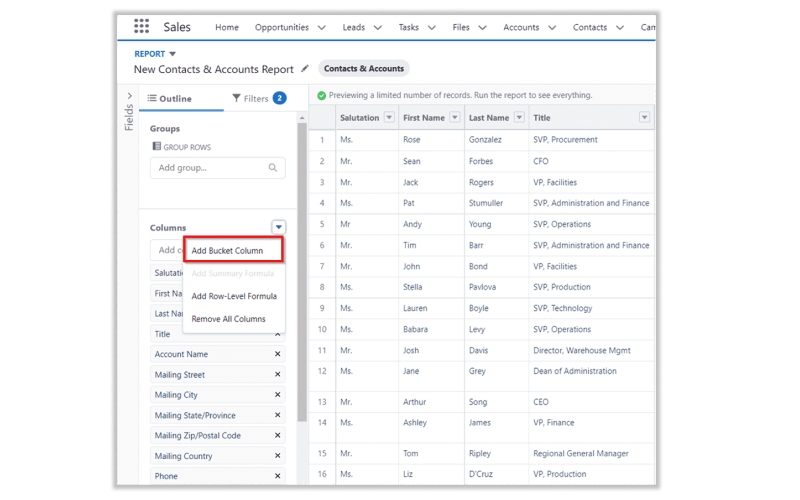
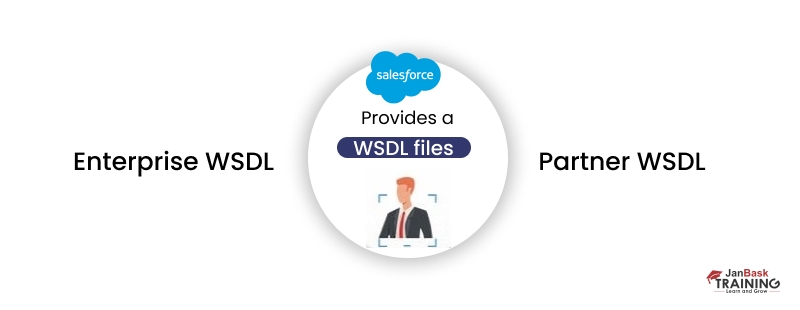
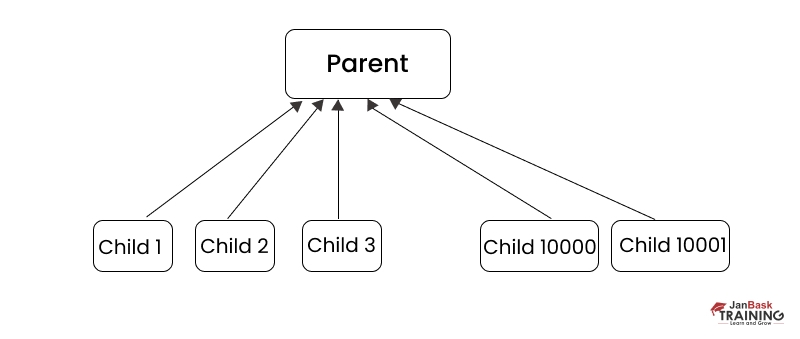
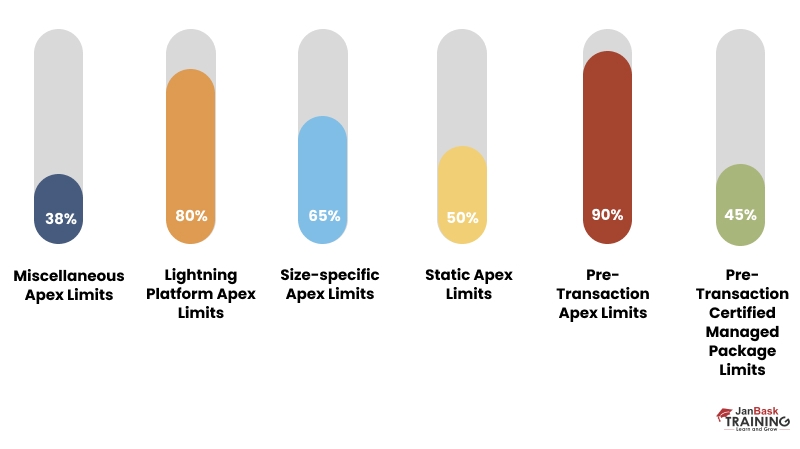

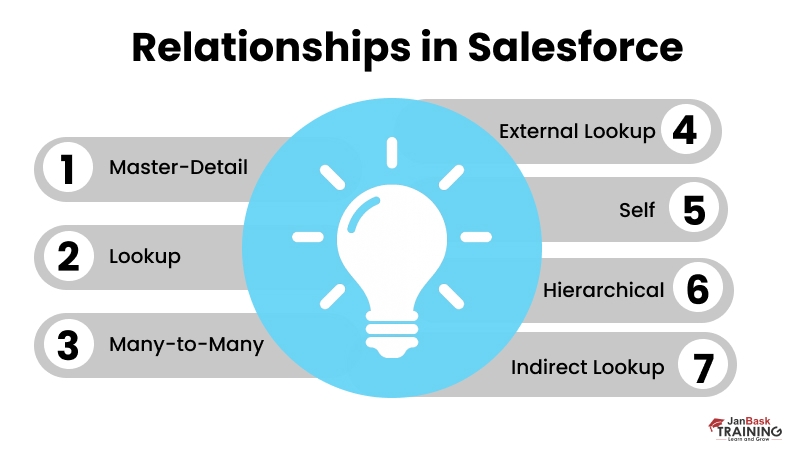
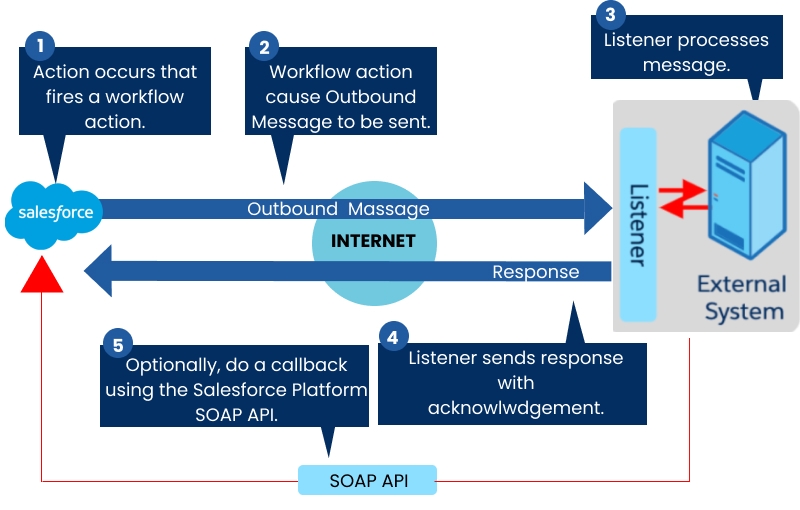
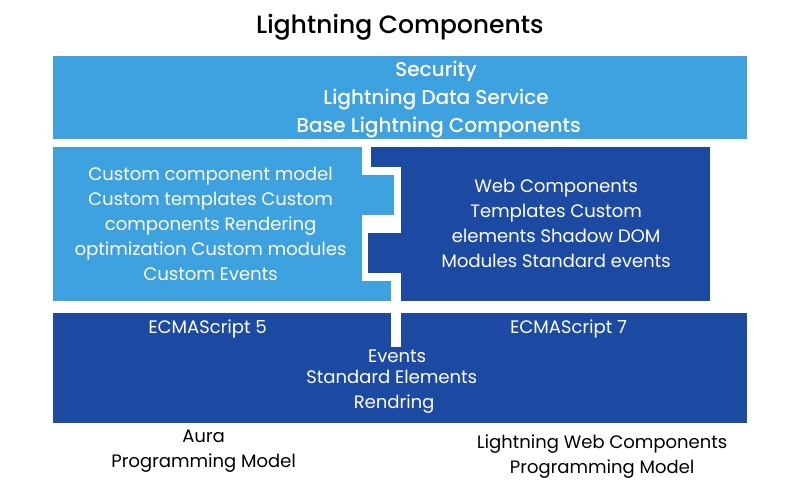
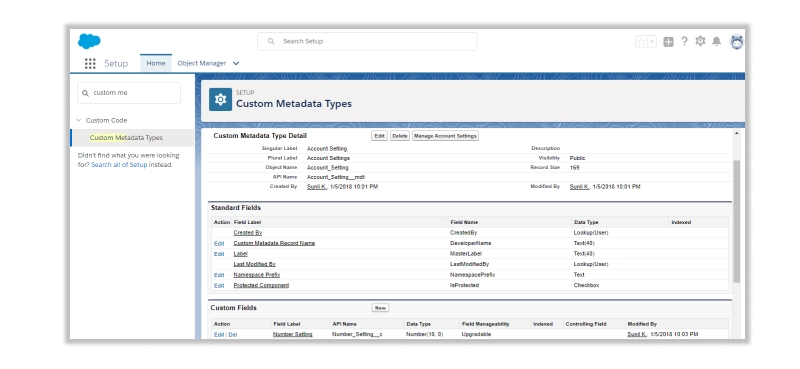
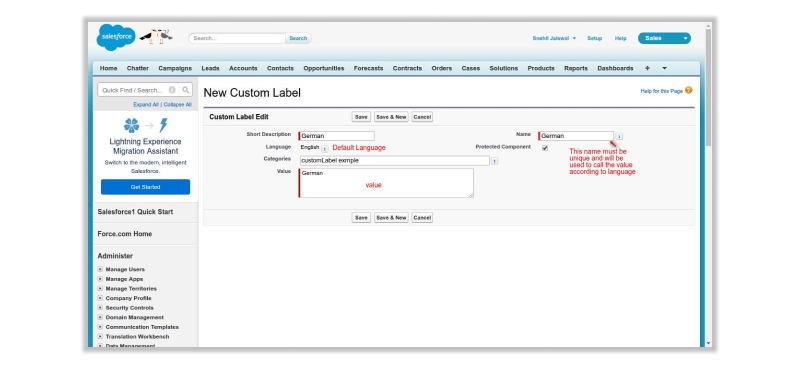
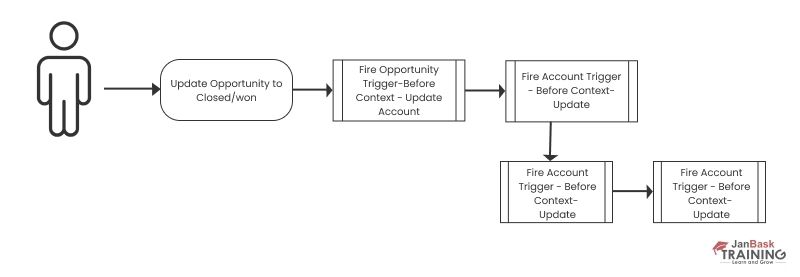
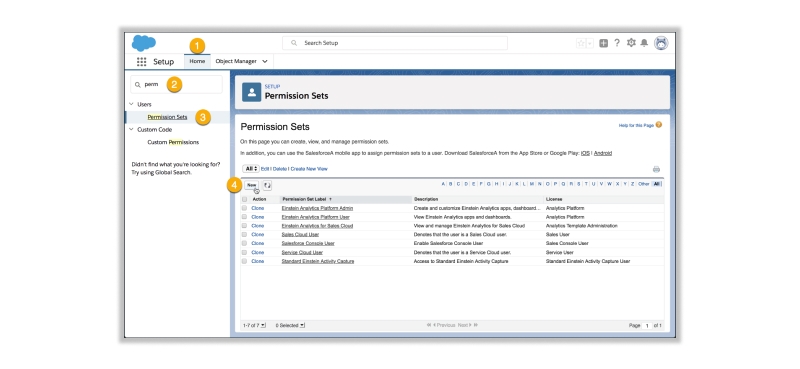
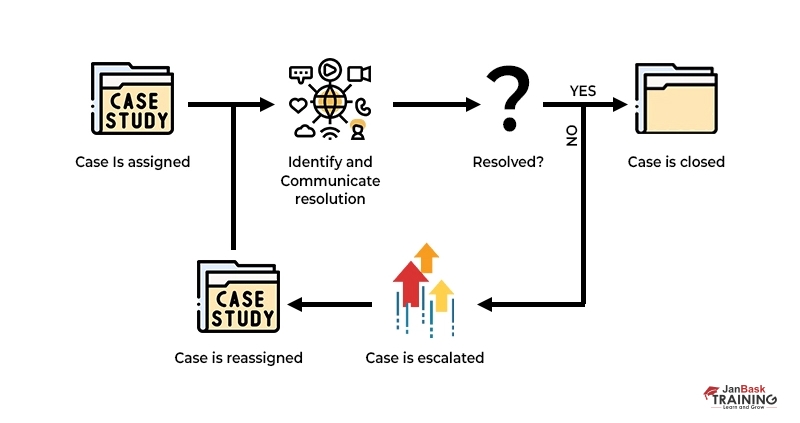
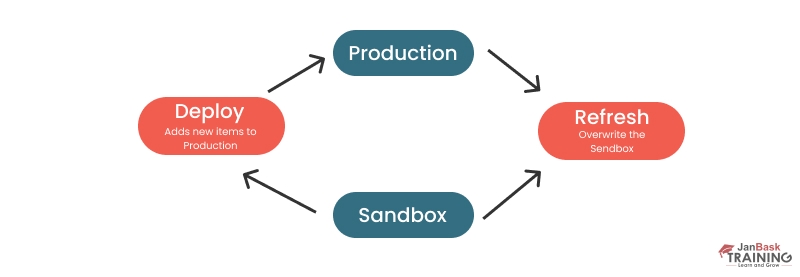
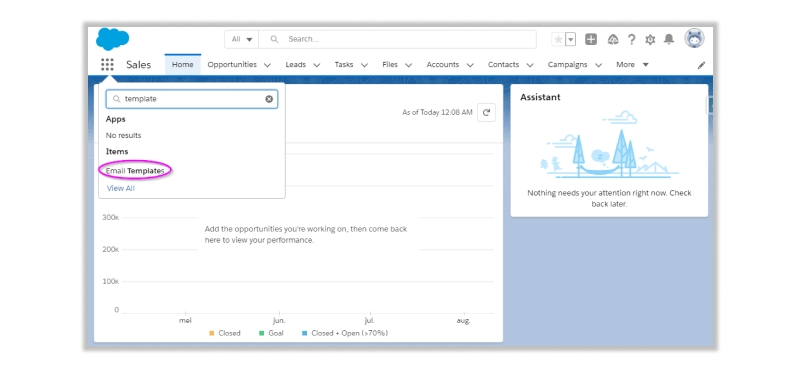

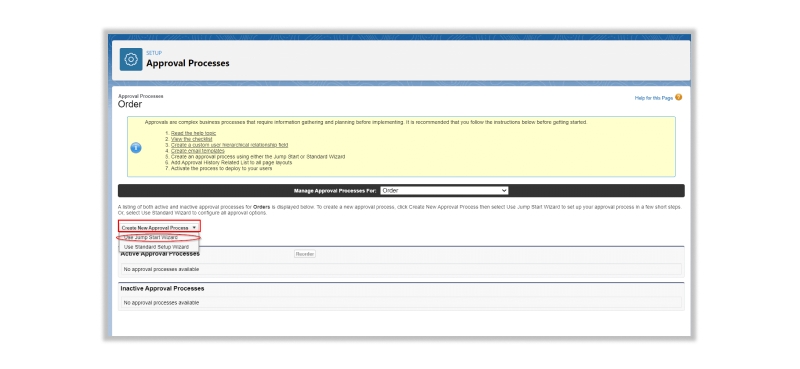
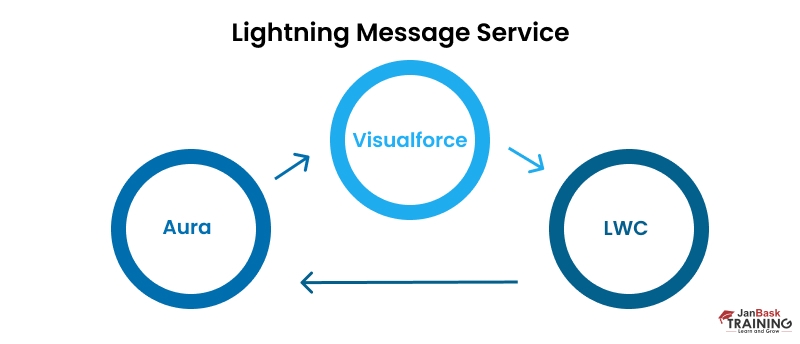
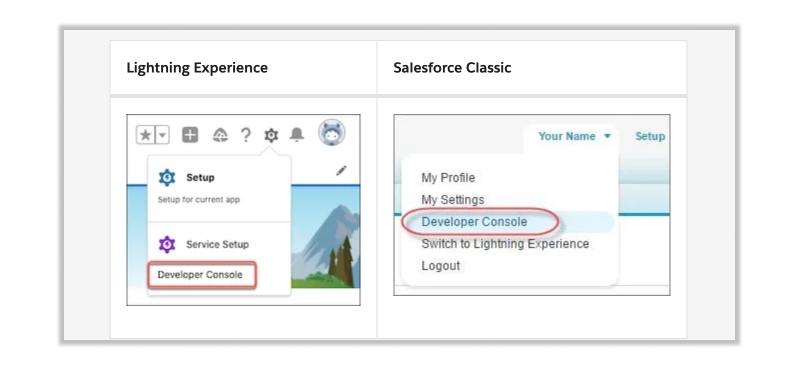
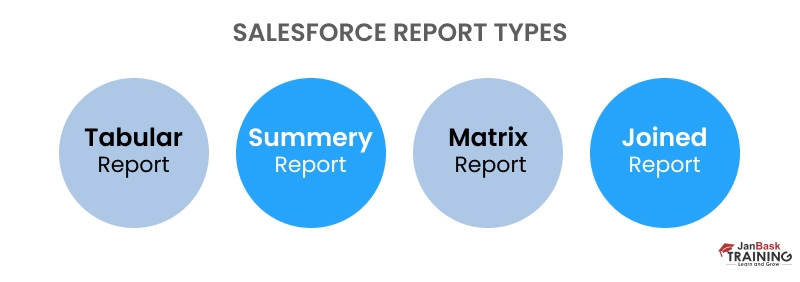
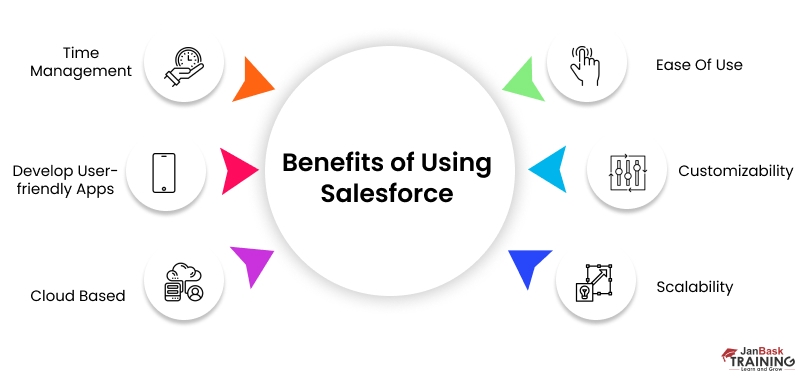
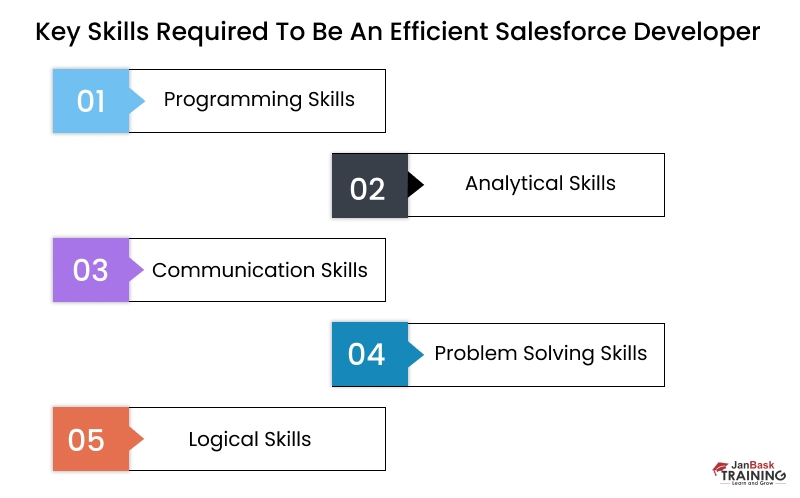
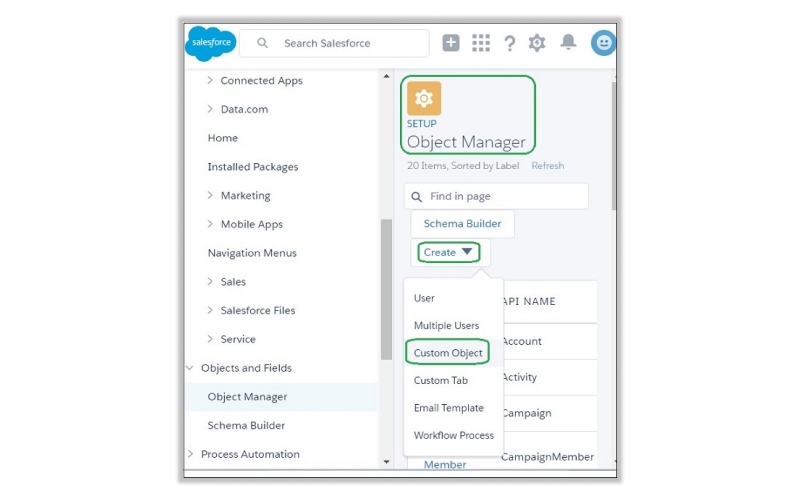
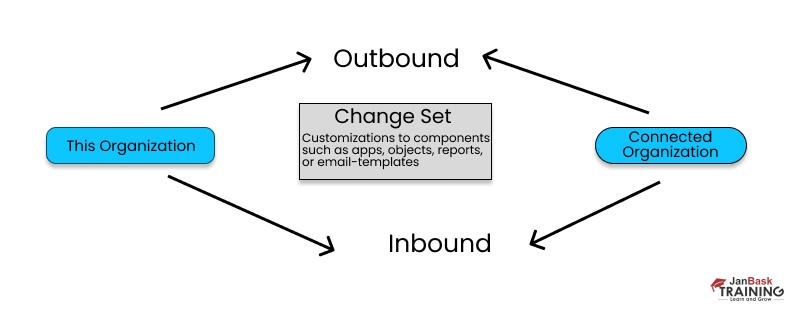
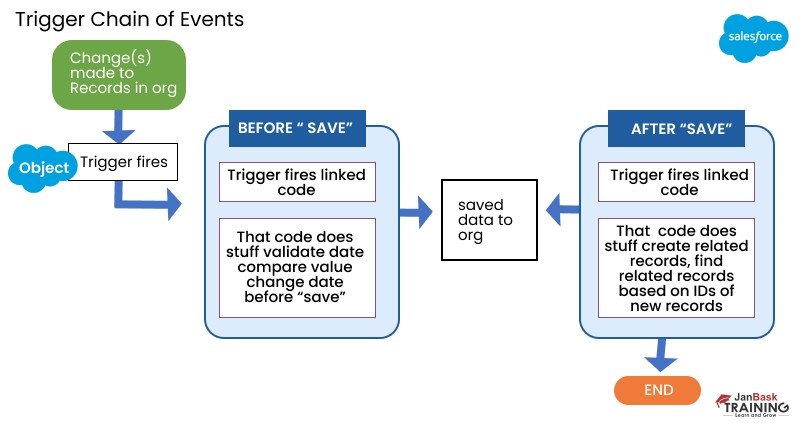
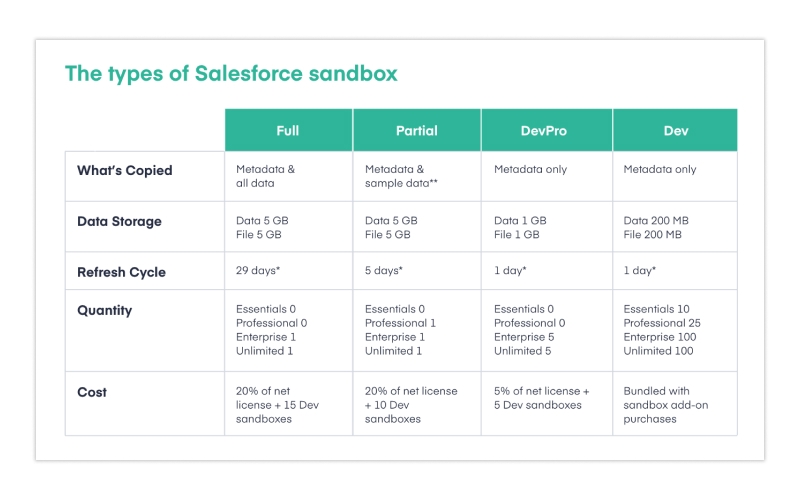






















Jax Williams
This is a great blog about interview questions for salesforce developers. It provides an extensive range of salesforce developer interview questions and answers. It is a great blog, comprising apex interview questions and salesforce developer questions.
JanbaskTraining
Hey, Thanks for sharing your experience. For further insight, you can connect to us at https://www.janbasktraining.com/contact-us
Amari Jones
This is such a wonderful blog. It comprises salesforce development interview questions. The blog also enumerates salesforce developer interview questions for freshers, salesforce developer interview questions and answers, and salesforce apex interview questions as well as salesforce interview questions for experienced developer.
JanbaskTraining
Hey, Thanks for sharing your experience. For further insight, you can connect to us at https://www.janbasktraining.com/contact-us
Zane Brown
This is an amazing blog, as it enlists interview questions for salesforce developer. I loved reading the blog and it is a very helpful blog for anybody who wishes to appear for the salesforce developer interview. The blog also contains salesforce interview questions for experienced developer.
JanbaskTraining
Hey, Thanks for sharing your experience. For further insight, you can connect to us at https://www.janbasktraining.com/contact-us
Emilio Davis
This is a splendid blog. It contains salesforce development interview questions and apex interview questions. I am planning to appear for the salesforce developer interview and this blog is a great help for me. I couldn’t help reading the blog till the end. I loved reading the blog.
JanbaskTraining
Hey, Thanks for sharing your experience. For further insight, you can connect to us at https://www.janbasktraining.com/contact-us
Knox Miller
This is a wonderful blog. It contains salesforce apex interview questions and salesforce interview questions for experienced developer. This is a great blog that has proven very helpful for me. The blog contains salesforce developer questions also. This is indeed a great blog.
JanbaskTraining
Hey, Thanks for sharing your experience. For further insight, you can connect to us at https://www.janbasktraining.com/contact-us